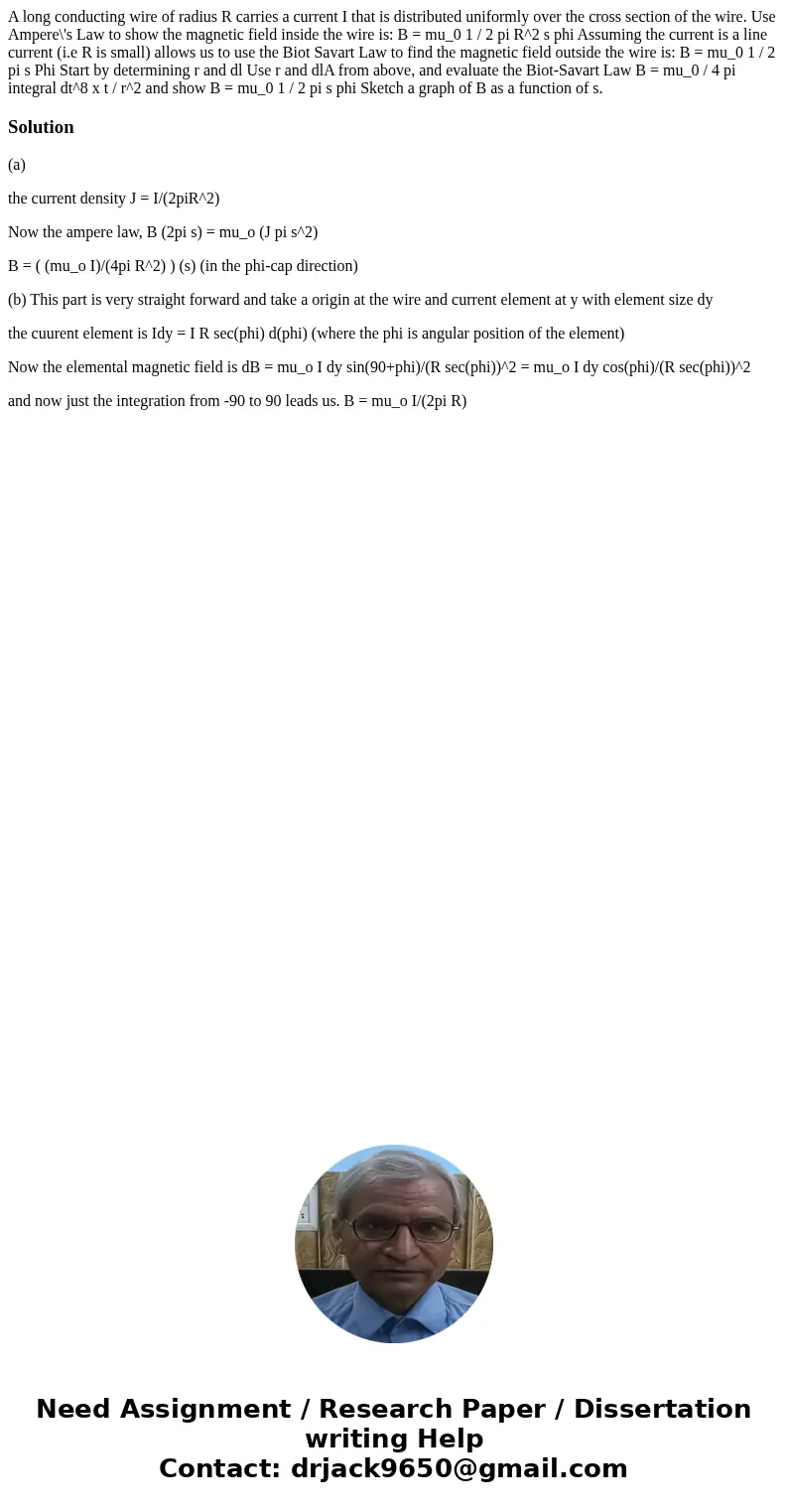A long conducting wire of radius R carries a current I that
A long conducting wire of radius R carries a current I that is distributed uniformly over the cross section of the wire. Use Ampere\'s Law to show the magnetic field inside the wire is: B = mu_0 1 / 2 pi R^2 s phi Assuming the current is a line current (i.e R is small) allows us to use the Biot Savart Law to find the magnetic field outside the wire is: B = mu_0 1 / 2 pi s Phi Start by determining r and dl Use r and dlA from above, and evaluate the Biot-Savart Law B = mu_0 / 4 pi integral dt^8 x t / r^2 and show B = mu_0 1 / 2 pi s phi Sketch a graph of B as a function of s.
Solution
(a)
the current density J = I/(2piR^2)
Now the ampere law, B (2pi s) = mu_o (J pi s^2)
B = ( (mu_o I)/(4pi R^2) ) (s) (in the phi-cap direction)
(b) This part is very straight forward and take a origin at the wire and current element at y with element size dy
the cuurent element is Idy = I R sec(phi) d(phi) (where the phi is angular position of the element)
Now the elemental magnetic field is dB = mu_o I dy sin(90+phi)/(R sec(phi))^2 = mu_o I dy cos(phi)/(R sec(phi))^2
and now just the integration from -90 to 90 leads us. B = mu_o I/(2pi R)

 Homework Sourse
Homework Sourse